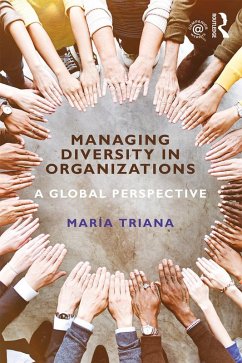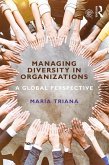Dieser Download kann aus rechtlichen Gründen nur mit Rechnungsadresse in A, B, BG, CY, CZ, D, DK, EW, E, FIN, F, GR, HR, H, IRL, I, LT, L, LR, M, NL, PL, P, R, S, SLO, SK ausgeliefert werden.
Raymond Trau, RMIT University, Australia
"Triana has written an excellent resource for advanced students and teachers of diversity in organizations. She provides thorough coverage of the topic and interweaves the latest research findings with compelling illustrations from the real world and thought-provoking discussion questions. Diversity continues to be a hot topic and Triana provides a text which both educates and engages the reader."
Adrienne Colella, Tulane University, USA
"This book provides a clear discussion of how to approach and think about diversity in the workplace. It includes a review of the issues relating to historically disadvantaged groups in the US, discusses the literature on how diversity can affect team and organizational performance, describes the policy landscape, and gives concrete suggestions for policies that will increase inclusion and collaboration. It is useful reading for anyone who wants to be more aware of the challenges created by diversity within an organization and wishes to build diverse teams that lead to better decision-making and stronger performance."
Rebecca M. Blank, University of Wisconsin-Madison, USA
"Taking a global view, this comprehensive and engaging new book gives an excellent overview of the various facets of diversity and the challenges associated with managing diversity in organizations. Providing key term definitions, lively cases, and easy to understand theory, it is a must read for students, scholars, and practitioners alike."
Tanja Rabl, University of Kaiserslautern, Germany
"If you're looking to understand why and how business should care for diversity, this is a must-read. By articulating both the benefits and challenges of diversity, this book provides rich theoretical explanations and useful practical implications. Global views are particularly invaluable as workplaces become increasingly diverse around the world."
Kwanghyun "Harry" Kim, Korea University, South Korea









